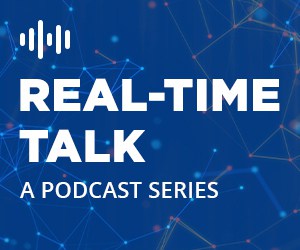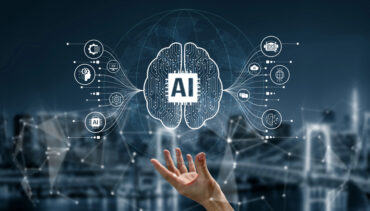
With GenAI integrated into customer helpdesk processes, interactions can become far more efficient, and resolutions reached far quicker leading to more satisfying and personalized customer experiences.
Every so often – or maybe not so often – something comes along that is genuinely disruptive. GenAI – or Generative Artificial Intelligence – has the potential to have a truly transformative effect on society as we know it today. It is an exciting form of AI that creates a wide range of data, from images to text, from 3D models to music. By learning from existing patterns, GenAI generates unique and realistic outputs, utilizing advanced algorithms to create new content based on given prompts.
This capability is going to be – literally – invaluable to telcos as GenAI comes into play as the driver for truly individual personalised user experiences. GenAI will disrupt business models, redefine the value chain, and enable telcos to create one-to-one relationships with their subscribers. This is essential to telcos looking to differentiate in an increasingly crowded and competitive market where continuous investment in innovation is pivotal to success.
Customer expectations are becoming increasingly more demanding. With everything everywhere becoming dependent on connectivity, consumers and businesses need robust and seamless connectivity anywhere and at any time. Not only do telcos need to deliver that, but with the proliferation of apps and services, telcos need to keep one step ahead of trends. They need to better utilize their assets and exploit their network capabilities to ensure their customers are fully engaged and all opportunities for up- and cross-selling are maximized.
According to Forrester, 2024 will bring a new era of AI where gimmicks and technical experimentation of GenAI give way to more focused and strategic initiatives. In their 2023 AI Pulse Survey, 67% of enterprises indicated that they are folding GenAI into their overall AI strategy.
GenAI is a gift for the telcos – by harnessing its power, telcos can provide personalised experiences that are as unique as the customers themselves.
A long history of data-driven operations
There has always been a huge amount of customer data available to telcos, from location and purchase history – and therefore insight into areas such as work patterns, leisure preferences and viewing habits – through to data from business assurance and CRM systems. However, as with all data, it only becomes valuable once it has been collated, analysed and translated into useful information and actionable insights.
Telcos have traditionally not been proactive when it comes to leveraging customer data. Think of the Amazon model – ‘if you bought that, then you might like this.’ Do telcos use their customer data to generate that kind of recommendations – no? They have the potential to extract so much more value from their customers. Amazon only knows what its customers buy. Telcos know where their customers are, where they travel to, what they watch, how they watch it, what music they like, how they listen to it, and so on. Telcos might do customer segmentation, but until now, it hasn’t been dynamic. They might do it on a regular basis, but not with the advantage of having access to properly processed and organized real-time data. Personalization is generalized, not individualized. Pushing offers and opportunities that are not relevant to customers is counter-productive – it’s just annoying to receive information of no interest – it’s essentially then spam.
See also: Telcos Turn to AI to Solve Their Biggest Problems
The role of GenAI
With its speed and depth of learning, GenAI is creating a paradigm shift in the ability of telcos to personalize services. As GenAI draws on an ever-deepening pool of knowledge, functions, tools, and skills, its inherent flexibility can generate accurate, relevant, targeted promotions, advertisements, and suggestions and push them out on an individual basis. The consumer does a double-take – ‘Wow – that’s spot on, I’ll take advantage – thanks!’ That’s exceeding customer expectations and making the customer feel valued rather than part of a vague cohort.
A good example is the consumption of media – music and video – and customer preferences as to how they access that content. Customers may watch sports on YouTube but not music videos; they use Spotify for music. With GenAI, that difference is recognized instantly, and targeted benefits are created in real time for individual customers. It may be an offer for a device with a larger screen for the YouTube watcher, VIP access to tickets for sporting events – or a bigger data bundle at a discounted price. Spotify users could get discounted subscriptions or early warnings about when tickets for gigs by their favorite artists go on sale. The bottom line is that the more detail that is gathered, the better the relationship with that customer can become.
A further positive change in terms of customer relationships can be achieved by integrating AI into customer service activity. Anyone who has attempted to navigate the prolific choice of tariffs, devices, and bundled offers when changing service providers or renewing a contract will know how confusing it can be. Customer service assistants – humankind – will equally have problems immediately understanding to which product or service the customer’s issue relates when they take a call.
There are a huge number of calls and interactions with telco customer helpdesks that are related to billing, and if the customer’s concerns are not quickly understood this can cause frustration and loss of trust. With GenAI integrated into the process, interactions can become far more efficient, and resolutions reached far quicker. GenAI can automatically summarise complex information and generate simplified and appropriate responses, smoothing the conversational path and avoiding customers becoming exasperated and disillusioned.
Training a GenAI model does require customization for specific use cases. Models like OpenAI’s ChatGPT can be fine-tuned by adjusting parameters and refining results with training data, so a customer helpdesk might train a chatbot using customer queries and responses. The model also needs to be trained in telco-specific language to enable the most realistic and reassuring conversation models.
GenAI is beginning to play a key role in the telco world, and ChatGPT’s success showcases the potential for its widespread adoption. Early implementation challenges are driving research for better detection and provenance tracking, and improvements in AI development platforms are accelerating GenAI capabilities. Embedding generative AI into existing telco tools will have a significant impact on the sector.
Overall, J.P. Morgan Research estimates generative AI could increase global GDP by $7–10 trillion, or by as much as 10%. The technology could result in a massive workforce productivity boom over the next one to three years, which could affect the shape of the economic cycle.
The power and potential of GenAI is unlimited. It is essential that we control it, rather than as the scaremongers would have us believe – it controls us, but it is here to stay, and properly understood and applied; it will create a revolution in the way we all interact.































